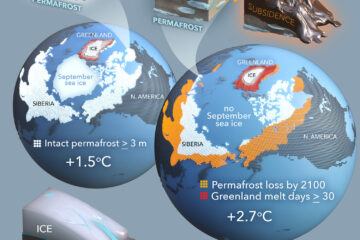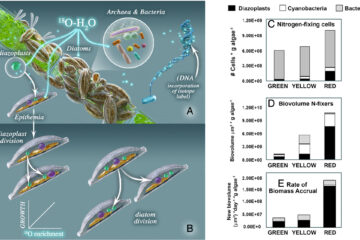Tree genotype mediates covariance among communities from microbes to lichens and arthropods
Community genetics studies frequently focus on individual communities associated with individual plant genotypes, but little is known about the genetically based relationships among taxonomically and spatially disparate communities. We integrate studies of a wide range of communities living on the same plant genotypes to understand how the ecological and evolutionary dynamics of one community may be constrained or modulated by its underlying genetic connections to another community. We use pre-existing data sets collected from Populus angustifolia (narrowleaf cottonwood) growing in a common garden to test the hypothesis that the composition of pairs of distinct communities (e.g. endophytes, pathogens, lichens, arthropods, soil microbes) covary across tree genotypes, such that individual plant genotypes that support a unique composition of one community are more likely to support a unique composition of another community. We then evaluate the hypotheses that physical proximity, taxonomic similarity, time between sampling (time attenuation), and interacting foundation species within communities explain the strength of correlations. Three main results emerged. First, Mantel tests between communities revealed moderate to strong (q = 0.25–0.85) community–genetic correlations in almost half of the comparisons; correlations among phyllosphere endophyte, pathogen and arthropod communities were the most robust. Secondly, physical proximity determined the strength of community–genetic correlations, supporting a physical proximity hypothesis. Thirdly, consistent with the interacting foundation species hypothesis, the most abundant species drove many of the stronger correlations. Other hypotheses were not supported. Synthesis. The field of community genetics demonstrates that the structure of communities varies among plant genotypes; our results add to this field by showing that disparate communities covary among plant genotypes. Eco-evolutionary dynamics between plants and their associated organisms may therefore be mediated by the shared connections of different communities to plant genotype, indicating that the organization of biodiversity in this system is genetically based and non-neutral.


